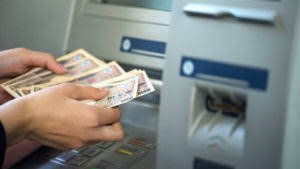At Invoiced, we provide a suite of solutions that work together to make managing your invoicing, accounts receivable, and accounts payable seamless and easy. To convert your invoice management efforts to an electronic format that can easily share data with other financial systems, businesses can leverage Invoiced’s E-invoice Network. At the same time, our Accounts Receivable Automation software and Accounts Payable Automation software makes tracking, managing, and processing crucial assets and liabilities — and their contras — easier than ever before. A contra account is an entry on the general ledger with a balance contrary to the normal balance for that categorization (i.e. asset, liability, or equity). For the purpose of financial statement reporting, the amount on a contra account is subtracted from its parent account gross balance to present the net balance. By keeping the original dollar amount intact in the original account and reducing the figure in a separate account, the financial information is more transparent for financial reporting purposes.
What is asset? Definition, Explanation, Types, Classification, Formula, and Measurement
This is important for accurate financial reporting and compliance with… Sometimes, it is important to keep the original balance of the accounts and create the contra accounts to be able to calculate the net value of the account. Whenever the balance of an account needs to be reduced in a company’s ledger, it is not always applicable to credit the account if it is an asset or debit the account if it is a liability. In order to keep the accounts receivables as clean as possible with their historical values, we will use this contra account called allowance for doubtful accounts. We will define what contra accounts are, the types of contra accounts and provide examples to illustrate. Utilizing contra accounts in financial accounting has several significant advantages that enhance financial transparency and enable more effective financial management.
Taking a closer look at contra asset accounts
- The Allowance for Doubtful Accounts is used to track the estimated bad debts a company my incur without impacting the balance in its related account, Accounts Receivable.
- So as values shift depending on real-world factors, rather than making deductions or adjustments to the original or “parent” account, you would record these changes in the contra account instead.
- But sometimes, dissimilar transactions are important to consider together within a ledger.
- There are two major methods of determining what should be booked into a contra account.
- A contra liability account is not classified as a liability, since it does not represent a future obligation.
Contra asset accounts include allowance for doubtful accounts and the accumulated depreciation. Expense accounts are technically contra equity accounts because they are linked to another equity account, revenue, and maintain an opposite balance. The expense account uses its debit balance to reduce the revenue account’s credit balance. Contra equity is a general ledger account with a debit balance that reduces the normal credit balance of a contra expense account standard equity account to present the net value of equity in a company’s financial statements. By reporting contra asset accounts on the balance sheet, users of financial statements can learn more about the assets of a company. For example, if a company just reported equipment at its net amount, users would not be able to observe the purchase price, the amount of depreciation attributed to that equipment, and the remaining useful life.
- For instance, to increase asset and expense accounts, we simply record a debit and to decrease those accounts, we can record a credit.
- The exact process can vary depending on the specific contra account and the accounting practices of the company.
- Contra revenue accounts reduce revenue accounts and have a debit balance.
- To convert your invoice management efforts to an electronic format that can easily share data with other financial systems, businesses can leverage Invoiced’s E-invoice Network.
- We’ll need to dig into the footnotes to find out what the contra accounts are.
- The bond is listed on the balance sheet at the full amount of $1,000, but the cash received is just $950, so a contra liability for the discount is listed to make the entry balance.
Contra revenue account
- A contra expense account is an account used to reduce the amount of an expense without changing the balance in the main expense account.
- The difference between an asset’s account balance and the contra account balance is known as the book value.
- A contra account is an account with a balance opposite the normal accounts in its category.
- The main reason is to make the remaining shares more valuable, as their prices are expected to rise after the stock buyback.
- Now, if that sounded like a lot of mumbo-jumbo jargon to you, don’t worry.
- In other words, accumulated depreciation will be $10,000 each year until the car depreciates to $0 twenty years later.
While tracking contra asset accounts is cumbersome for bookkeepers and accounting clerks using manual accounting systems, if you’re using accounting software you’ll find that most of the heavy lifting is done for you. You may not need to use contra asset accounts right now, but as your business grows, using contra asset accounts will likely become a necessity. The accumulated depreciation account is perhaps the most common contra asset account used by business owners.
Accumulated depreciation is a contra asset account used to record the amount of depreciation to date on a fixed asset. Examples of fixed assets include buildings, machinery, office equipment, furniture, vehicles, etc. The accumulated depreciation account appears on the balance sheet and reduces the gross amount of fixed assets.
What is Accumulated Depreciation?
We’re firm believers in the Golden Rule, which is why editorial opinions are ours alone and have not been previously reviewed, approved, or endorsed by included advertisers. The Ascent, a Motley Fool service, does not cover all offers on the market. If you keep a lot of inventory in stock, chances are that some of the inventory will become obsolete. This frequently happens to manufacturing companies that sell products with an expiration date since any inventory remaining in stock past the expiration date quickly becomes obsolete. A company receives rebates for advertising it does on behalf of brands it carries in its stores.
When a contra asset account is first recorded in a journal entry, the offset is to an expense. For example, an increase in the form of a credit to allowance for doubtful accounts is also recorded as a debit to increase bad debt expense. In response, the firm should decrease its accounts receivable and revenue balances. That is done by crediting accounts receivable by $100 and debiting the contra revenue account sales returns and allowances for $100.









